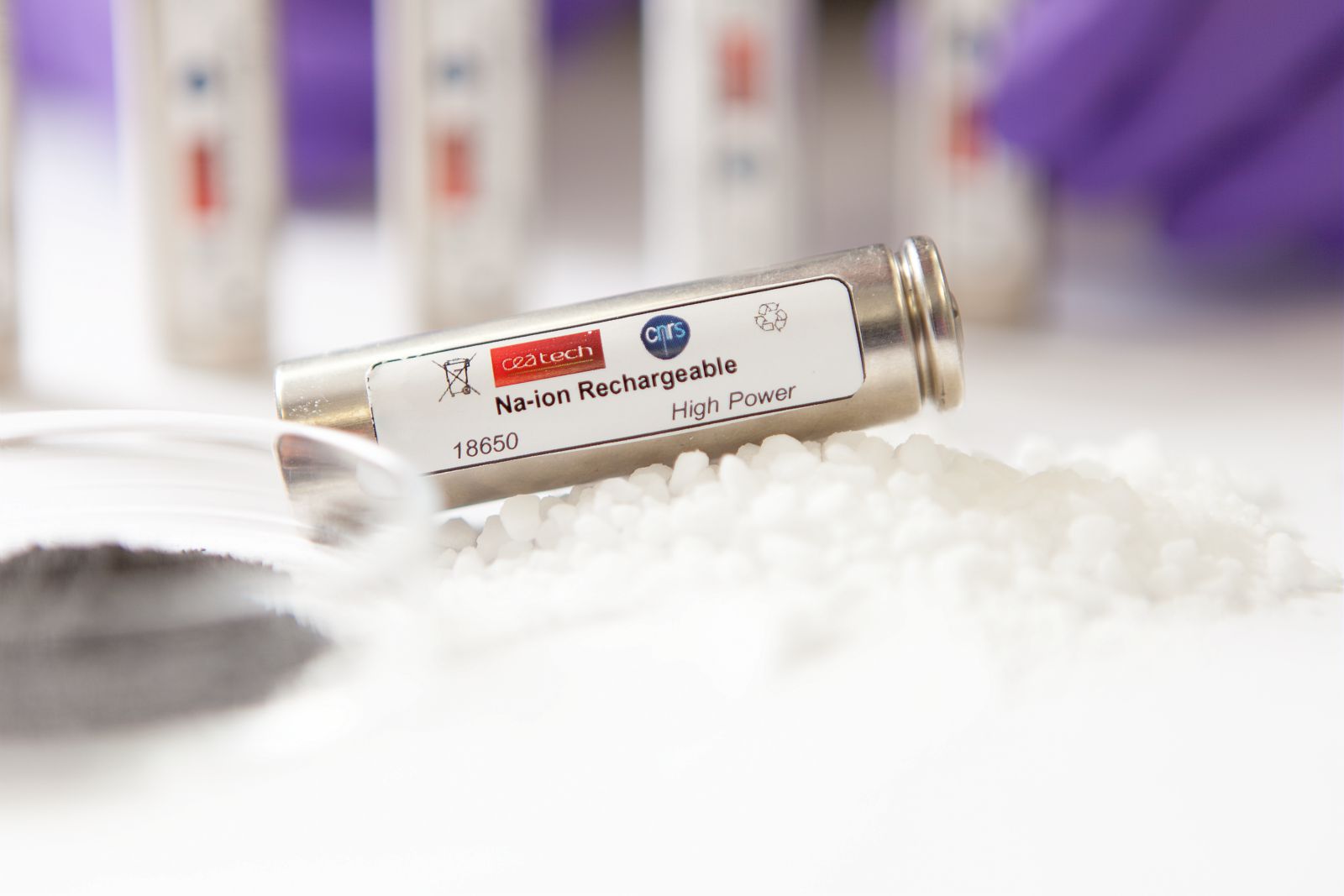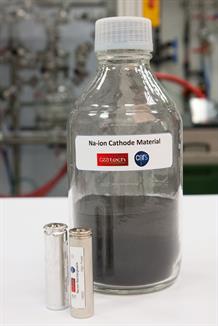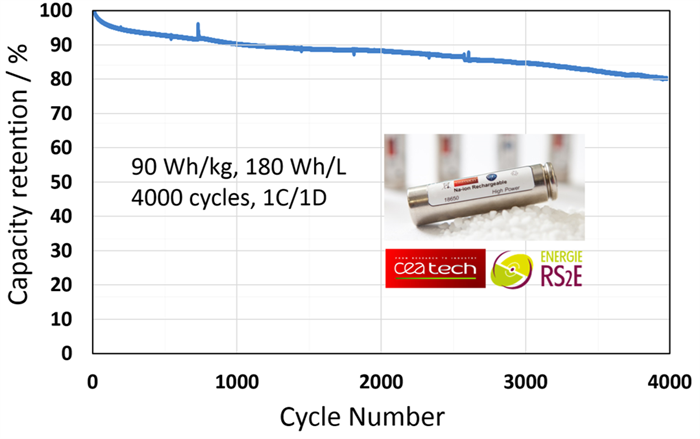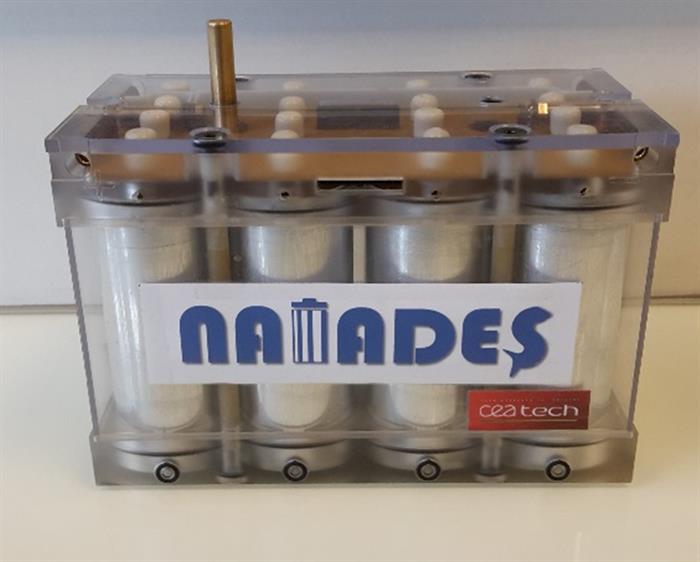Battery technology for the large-scale storage
When intermittent renewable energy sources, such as wind, sun and waves, are widespread and used in the power grid, production of efficient and inexpensive energy storage systems becomes unavoidable. Thus, the expansion of battery technology for large scale energy storage is very relevant.
Led by the CEA1, the European project NAIADES, which stands for ‘Na-Ion battery demonstration for electric storage’ aims to develop and demonstrate the ambient Na-ion battery under realistic conditions as an effective alternative to the Li-ion.
Lithium-ion battery status
Although, the lithium-ion battery is mature enough for many applications and the price is continuously decreasing thanks to mass production, cost of Lithium (Li) ores will probably go up in the future, and need to be considered. Other technologies, such as for instance Zebras2’s high temperature technology incorporating low cost sodium based materials, are less expensive compared to Li-Ion battery technology. Li's geographically limited mineral reserves3 will possibly not be able to meet the increased demand for lithium chemicals associated with the widespread use of the large-format lithium battery, potentially leading to higher prices. However, it is worth mentioning that Cobalt and Nickel, two elements used in commercial Li-ion batteries, are more costly and sensitive (because of lower resources) than Lithium.

Sodium-ion cell. © Vincent Guilly/CEA
1 Liten, an institute of CEA Tech, is coordinating the project. Liten is a major European research institute and a driving force behind the development of the sustainable energy technologies of the future. The institute is spearheading the EU's efforts to limit dependency on fossil fuels and reduce greenhouse gas emissions in three key areas: renewable energy, energy efficiency/storage and development of materials.
2 Meaning “Zero Emissions Batteries Research Activity”, and invented in 1985 in South Africa, this technology is a lower-temperature variant of Sodium-Sulfur battery.
3 Estimated to 14 millions of tons in January 2016 by the United States Geological Survey, those are concentrated in Bolivia (58 % of total reserves) and China (27 %).
Na-ion battery – an alternative to the lithium-ion batteries…
The Na-ion technology is now considered as a serious alternative to Li-Ion batteries for some applications. It is a subject of research all over the world. Some countries, such as the United States, Japan, the United Kingdom and Israel, are highly involved in these studies. However, it took many years of research for sodium batteries to get some successes, whereas Lithium, at the end of 1980s, was able to provide more energy and to produce very lightweight batteries, three times lighter than sodium ones. But sodium battery, despite its more important weight and mass than lithium battery which is detrimental to make of Na-Ion an efficient mobility storage solution, can today meet the needs of large-scale network energy storage due to the high availability, low cost, and improved safety offered by future ambient temperature sodium batteries. Indeed, sodium-ion batteries could provide a privileged position in the storage of intermittent renewable energies, such as wind or solar energy, and also in domestic battery market.

…built on advanced French contributions
In 2012, a landmark year for sodium batteries, the CNRS and the CEA have joined forces with 15 industrial actors to develop new-generation batteries, including the sodium-ion battery, in the French Electrochemical Energy Storage Network (RS2E). The creation of this national network favored the appearance of the first prototype of a sodium-ion battery, whose performances are making rather impressive progress comparable to lithium-ion batteries. For instance, it allows more than 4 000 cycles of charge-discharge with an energy density of 90 Wh/kg, comparable to high power li-ion technologies. It offers an opportunity for Europe to take the lead on this field, especially when considering that today 95 % of Li-ion batteries are produced in Asia. Developments of sodium-ion battery can now be observed around the globe. In order to keep up the pace of international competition, NAIADES partners consider it is high time to move on and further.

This graphic shows the first 18650-type cell in the world, which allows more than 4000 cycles of charge-discharge with an energy density of 90 Wh/kg, comparable to high power li-ion technologies. © NAIADES
Towards a module demonstration in a realistic application environment
In NAIADES, the objective is to demonstrate the feasibility of ambient temperature Na-ion battery from the knowledge and achievement that has been obtained at the laboratory scale, up to a module demonstration in a realistic application environment.
Several European industries, research institutes and universities decided to join their efforts to assess the Na-ion technology for stationary storage application through building a 1 kW modules system Na-ion cell. Their results will serve as data base to demonstrate economical and public acceptance. These module prototypes will be developed to meet performances in a 1kW system in a cost-effective, sustainable and environmental-friendly manner. New energy policy will be developed to integrate the Na-ion battery in the European Smart Grids, helping the penetration of renewable energy in the electric network.

A module of 1kW, to be built in the next weeks by NAIADES consortium. Its characteristics: 24 cells 50125, 960W, 48V. © NAIADES
About NAIADES

Representing 10 organizations and countries, the researchers and industrial actors from CEA, CSIC, CNRS, VITO, CHALMERS, VDE, Solvay, SAFT, Estabanell Energia and INRA are working together under CEA coordination, towards the demonstration of the feasibility of ambient temperature Na-ion battery. The project is granted with a EU funding of 6,5 M €.